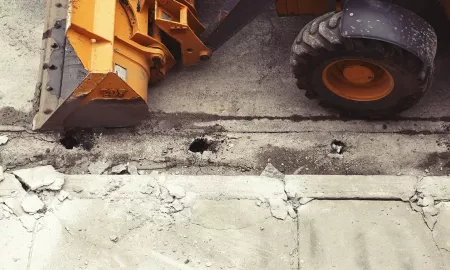Exposure to radon gas not only increases the risk of lung cancer but radon is the second highest cause of lung cancer in the UK with over 1100 annual deaths each year (smoking being the highest cause) and as such, understanding the level of radon and potential exposure in the workplace is fundamental to determining and managing the risk.

Radon contributes the largest component of background radiation dose received by the UK population.
Under the Health and Safety at Work etc. Act 1974, all employers as far as is reasonably practicable must ensure the health and safety of employees and others who have access to their work environment while The Management of Health and Safety at Work Regulations 1999 require the assessment of health and safety risks and this should include radon. The Ionising Radiations Regulations 2017 (IRR17) come into effect where radon is present above the defined level of 300 Bq/m3 (as an annual average) and employers are required to take action to restrict resulting exposures.
At SOCOTEC, we understand that monitoring and assessing radon exposure can be a complex process. David Gilmour, business manager for the Environment & Safety team aims to outline the process and explain the importance of monitoring radon exposure in the workplace.
What is radon and the risks?
Radon is a naturally occurring radioactive gas which is both colourless and odourless. It is formed by the radioactive decay of the small amounts of uranium that occur naturally in all rocks and soils. Radioactive elements, such as uranium, decay and subsequently emit radiation into the surrounding atmosphere which is then inhaled by the population. Most radon breathed in by an individual is immediately exhaled and presents little radiological hazard. However, the decay products of radon are themselves radioactive.
These decay products attach to atmospheric dust and water droplets and can then be inhaled and lodge in the lungs and airways. Some of these decay products emit particularly hazardous radiation called alpha particles, which cause significant damage to the sensitive cells in the lung.
Exposure to this type of radiation is a potential risk to health as radiation is a form of energy and can cause damage in living tissues increasing the risk of lung cancer.
Certain geographical regions are more prone to radon gas than others due to geological differences, and the levels at which it enters the atmosphere and into workplaces depends on the geology of the specific area.
Public Health England (PHE) conducted radon measurements in more than 600,000 dwellings and workplaces to map out ‘Affected Areas’ and in 2010 a HSE report concluded that 48% of the average UK radiation dose came from radioactive radon gas in the ground.
For employers, there is a legal duty to ensure the working environment is a safe place for employees by conducting a radon gas risk assessment to determine the exposure and where required, implement suitable control measures.
All workplaces including factories, offices, shops, classrooms, nursing homes, residential care homes and health centres can be affected by radon.
Monitoring and Assessing for Radon
Radon is able to be detected and measured using recognised and specific radon monitoring device. Due to the wide range of property designs, activities within those properties and their occupancy, a site specific monitoring plan is required to ensure that the assessment has the correct number of monitoring devices positioned in suitable and representative areas to ensure that an assessment provides accurate results on the potential exposure levels.
Typically, a single monitoring phase lasts for a three month period. However, to ensure that seasonal variations are determined and results are trended, it is a requirement to assess over a period of 12 months (four monitoring phases). This ensures results can be averaged over a 12 month period to allow a comparison against the annual average limit 300 Bq/m3 as stated in the Ionising Radiation Regulations (IRR17).
Where annual radon monitoring confirms average results exceeding 300 Bq/m3, the Ionising Radiation Regulations (IRR17) apply which means employers must take action to limit exposures.
Protective Measures against Radon
When elevated radon levels have been confirmed, reducing exposure can be achieved by incorporating protective measures or by engineering means. These measures can include improved under floor and indoor ventilation, sealing large gaps in floors and walls in contact with the ground, positive ventilation of occupied areas and installation of radon sumps and extraction pipework.
When necessary to reduce radon levels by engineered means, the employer should ensure that the radon levels in the area are re-measured immediately after installation in order to verify the effectiveness of the new control measures. Regular maintenance of the engineering controls, supported by occasional (e.g. annual) measurements will ensure that the system remains effective.
To find out more about radon monitoring, get in touch with our team on 0845 603 2112 or use the contact form.
Want to find out more about SOCOTEC's environmental services?

You might also like







Add new comment